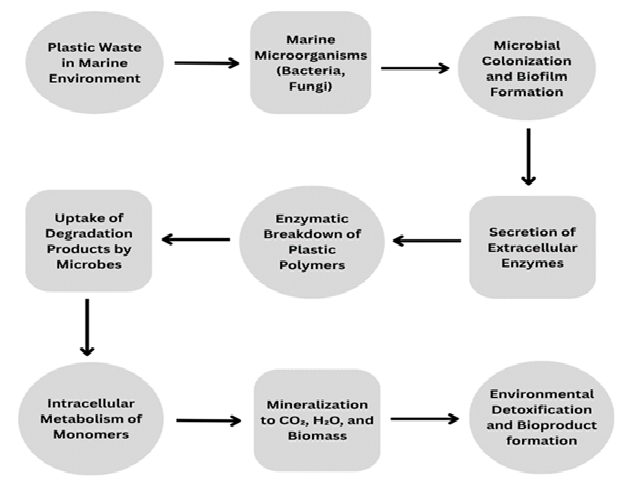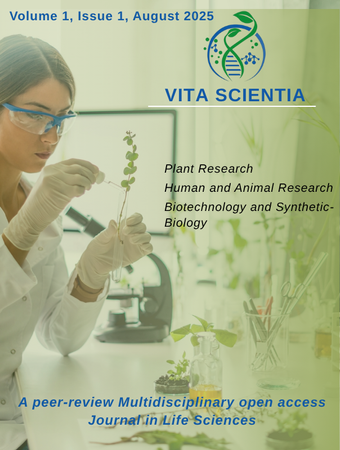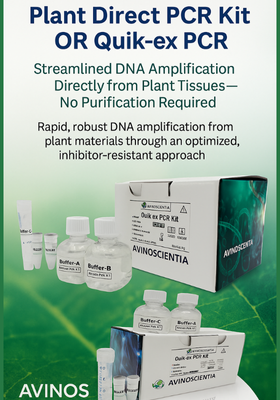Rapid urbanization, accelerated industrialization, and the mounting demands of a growing population have placed unmatched strain on natural resources, significantly impacting the global environment. These developments have led to unsustainable practices that generate vast quantities of waste, contributing to widespread pollution. Major industries consume raw materials extensively and release harmful substances—such as chemical pollutants, non-biodegradable plastics, and radioactive materials—into the environment, causing long-term damage to the biosphere. Plastic pollution is a major environmental problem, especially in marine habitats where about 80% of pollution consists of plastic waste. Every year, millions of tons of plastic enter the oceans, harming wildlife through entanglement, ingestion, and habitat disruption. Plastic breaks down very slowly, often into microplastics, which enter the marine food chain and threaten biodiversity and human health. Traditional methods like physical removal, recycling, and incineration help manage plastic waste but does not fully eliminate it. Microorganisms offer a promising solution by biologically degrading plastics into harmless substances such as carbon dioxide, water, and biomass. Microorganisms play a crucial role in reducing plastic pollution and protecting marine ecosystems by naturally decomposing plastic waste without harming the environment. This biological approach is vital for sustainable plastic waste management and preserving ocean health for the future. This communication provides a detailed structure on the impact of plastic waste on the environment and its management using microorganisms.
Impact of plastic waste on the earth, especially marine habitats
Plastic waste significantly harms the Earth by polluting land, freshwater, and marine ecosystems, disrupting natural habitats and reducing biodiversity. This issue is particularly severe in marine habitats, which cover approximately 70% of the Earth’s surface. Plastic pollution in oceans is a critical global issue, with plastic waste comprising around 80% of all marine pollution. Approximately 8 to 10 million metric tons of plastic enter the oceans annually. Alarmingly, by 2050, plastic in the oceans may outweigh all fish. According to the EPA, nearly 100% of all plastics ever made still exist today because it takes 500 to 1000 years to degrade, often breaking down only into harmful microplastics. Currently, there are an estimated 50 to 75 trillion pieces of plastic and microplastics floating in the oceans, contributing to massive garbage patches and ongoing ecological damage [1]. The biggest cause of damage to wildlife is physical wounds or entrapment from plastic waste leading into painful wounds, strangulation or even drowning. Some species unknowingly feed on plastic, which can choke them, cause internal injuries and starve them to death. Microplastics are consumed by plankton and small fish, entering the marine food chain and accumulating in larger species, including those consumed by humans. Incineration of plastic waste releases greenhouse gases like carbon dioxide and methane. It causes a huge impact on the internal temperature which leads to death of many marine species. This in turn leads to starvation of the predating marine species. This highlights the urgent need to address plastic pollution. Below are the solutions for effective plastic waste management.
Existing solutions for plastic waste management
The major concern for today's time is to control plastic consumption and increase plastic degradation though many existing solutions like The Marine Debris Tracker, Tracking trash through radio frequency identification (RFID) tags and cellular transmitters, projects such as Ahovi exist today, but their major focus lies on plastic trash tracking and identification not on degradation. [5, 6, 11, 1]. So, our article focuses on plastic degradation in sustainable way by utilizing microorganisms.
Microorganism’s biotechnology in plastic waste management is the process of utilization of modern scientific tools and techniques which use a wide variety of microorganisms in controlled conditions without disturbing the ecosystem [1]. The list of microorganisms that degrade different types of plastics is provided in table 1.
Table 1: List of microorganisms and their targeted compounds
| Name of Microorganism | Compounds/Plastics Degraded | References |
|---|---|---|
| Pseudomonas putida | Polyethylene terephthalate (PET), Polyurethane (PU) | [7] |
| Ideonella sakaiensis | Polyethylene terephthalate (PET) | [12] |
| Bacillus subtilis | Polyethylene (PE), Polyvinyl chloride (PVC) | [7] |
| Aspergillus niger | Polyurethane (PU), Polyethylene (PE) | [7] |
| Penicillium simplicissimum | Polyurethane (PU) | [10] |
| Phanerochaete chrysosporium | Polyvinyl chloride (PVC), Polyethylene (PE) | [7] |
| Streptomyces sp. | Polyethylene (PE), Polyvinyl chloride (PVC) | [7] |
| Rhodococcus ruber | Polyethylene (PE) | [8] |
| Cladosporium cladosporioides | Polyethylene (PE) | [10] |
| Engyodontium album | Polyurethane (PU) | [9] |
Plastic degradation by microorganisms
Anaerobic microorganisms break down micro plastic into microbial biomass, carbon dioxide, methane, and water when methanogenic conditions are satisfied. While aerobic microorganisms break down micro plastic into microbial biomass, carbon dioxide, and water depending on the environmental conditions. As soon as plastic enters the ocean, it provides a surface area for microbial colonization by bacteria and fungi. These microbial organisms will attach to surfaces, including plastic, and develop a biofilm. During this colonization process, microbial organisms begin to secrete extracellular enzymes that begin the degradation of complex plastic polymers. First, the extracellular enzymes provide small plastic molecules in the form of monomer and oligomer molecules. Microbial organisms will uptake plastic monomers and metabolize them inside the cell to achieve further breakdown. The final stages of the microbial organism’s process will be the mineralization of these monomers and oligomers into non-harmful by-products, such as carbon-dioxide (CO₂), water (H₂O), and microbial biomass. This will detoxify the environment but could also create useful bioproducts. Certain species of marine bacteria, such as Alcanivorax, Pseudomonas, and Marinobacter, etc., exhibited high rates of polymer degradation of PET and polyethylene polymers using the enzymatic process [1] as explained in the fig-1.

Fig.1: Flowchart of microbial degradation of plastic.
Conclusion
While physical removal, recycling, burning, and policy interventions are valuable for managing plastic waste, they are insufficient for complete degradation. Microorganisms are uniquely capable of breaking down plastics into harmless substances, making them essential for long-term solutions in marine habitats. Unlike mechanical or chemical methods, which often only displace or transform plastics without eliminating them, microorganisms have the unique capability to biologically break down complex plastic polymers into harmless end products like carbon dioxide, water, and biomass through natural metabolic processes. The microbial degradation technique can be used as a large-scale plastic waste management technique especially in coastal areas like beaches.
References
- 1. Haripriya M, Suthindhiran K. Waste management using marine microorganisms. Sustainable Environment. 2024; 10(1), 1–18, org/10.1080/27658511.2024.2324574.
- 2. https://oceanliteracy.unesco.org/plastic-pollution-ocean/
- 3. https://www.epa.gov/international-cooperation/protecting-global-marine-environment
- 4. https://www.unep.org/plastic-pollution https://www.padstowsealifesafaris.co.uk/blog/plastic-pollution-on-marine-life/
- 5. Maximenko N, Hafner J, & Niiler P. Pathways of marine debris derived from trajectories of Lagrangian drifters. Marine Pollution Bulletin. 2012; 65(1-3), 51–62, 10.1016/j.marpolbul.2011.04.016.
- 6. Mehnaz S, & Javaid A. Microbes and plastic waste management. Environmental Sustainability. 2020; 3, 337–339, 10.1007/s42398-020-00149-3.
- 7. Mondal S, & Palit D. Effective role of microorganism in waste management and environmental sustainability. In Sustainable Agriculture, Forest and Environmental Management. 2019; 485–515, 10.1007/978-981-13-6830-1_14.
- 8. Mor R, & Sivan A. Biofilm formation and partial biodegradation of polystyrene by the actinomycete Rhodococcus ruber: biodegradation of polystyrene. Biodegradation. 2008; 19, 851–858, 10.1007/s10532-008-9188-0.
- 9. Russell J R, Huang J, Anand P, Kucera K, Sandoval A G, Dantzler K W, & Strobel S A. Biodegradation of polyester polyurethane by endophytic fungi. Applied and Environmental Microbiology. 2011; 77(17), 6076–6084, 10.1128/AEM.00521-11.
- 10. Shah Z, Krumholz L, Aktas D F, Hasan F, Khattak M, & Shah A. Degradation of polyester polyurethane by a newly isolated soil bacterium, Bacillus subtilis strain MZA-75. Biodegradation. 2013; 24, 865–877, 10.1007/s10532-013-9634-5.
- 11. Sigler M. The effects of plastic pollution on aquatic wildlife: current situations and future solutions. Water, Air, & Soil Pollution. 2014; 225, 1–9, 10.1007/s11270-014-2184-6.
- 12. Yoshida S, Hiraga K, Takehana T, Taniguchi I, Yamaji H, Maeda Y, & Oda K. A bacterium that degrades and assimilates poly(ethylene terephthalate). Science. 2016; 351(6278), 1196–1199, 10.1126/science.aad6359.



